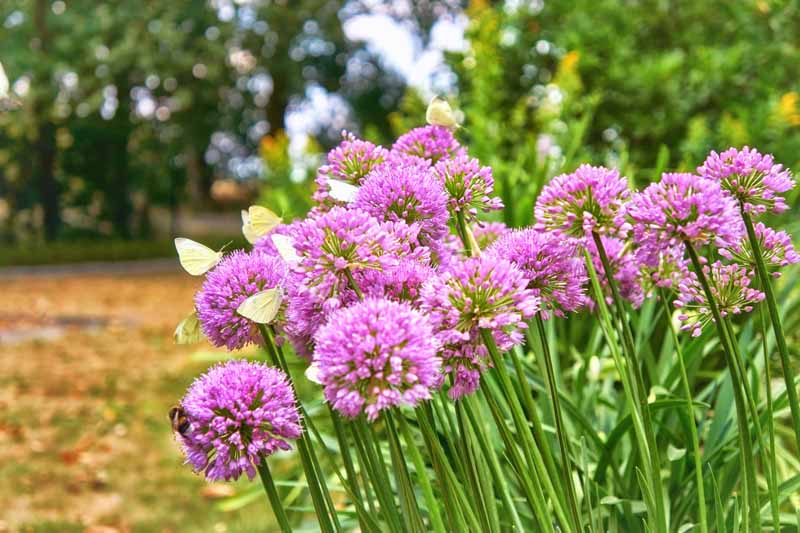Agapanthus Proliferation: Tips for Expanding Your Plant Collection
Agapanthus Proliferation: Tips for Expanding Your Plant Collection
Blog Article
Mastering the Art of Agapanthus Care: Important Actions for Healthy Growth and Vivid Blossoms
In the realm of horticulture, the cultivation of agapanthus stands as a gratifying endeavor for those who look for to nurture these elegant blooming plants. From selecting the best range to mastering trimming methods, the journey in the direction of growing growing agapanthus plants is diverse and holds the key to unlocking the complete capacity of these botanical gems.

Picking the Right Agapanthus Variety

When choosing the best Agapanthus range for your yard, think about variables such as climate suitability, bloom color, and development habit. Additionally, think about the environment in your area to guarantee the Agapanthus variety you pick can thrive in your specific problems. Understanding the development practice of different Agapanthus varieties is essential for correct placement within your yard.
Suitable Planting Problems
Considering the optimum ecological requirements is important for effective Agapanthus growing. Agapanthus plants are delicate to cold temperatures and should be protected from frost during winter season months.
To make sure healthy development and lively flowers, plant Agapanthus light bulbs at a depth of about 2-4 inches and space them 8-12 inches apart. Mulching around the base of the plants aids maintain moisture and reduces weed growth.
Watering and Feeding Tips
Maintaining appropriate dampness degrees and supplying crucial nutrients are crucial components in the care program for Agapanthus plants. When it comes to sprinkling Agapanthus, it is important to strike an equilibrium. These plants favor constantly damp soil however are susceptible to root rot if overwatered.
Feeding Agapanthus is important for promoting healthy growth and respected flowers. Apply a balanced plant food, such as a 10-10-10 formula, in the very early spring find out this here as new growth arises. By adhering to these watering and fertilizing tips, you can ensure your Agapanthus plants flourish and create vibrant, durable blooms.
Trimming Methods for Agapanthus
Pruning Agapanthus plants at the suitable times and with appropriate techniques is important for preserving their health and wellness and promoting optimum development and flowering. The optimal time to trim Agapanthus is in late winter months or very early spring prior to brand-new development arises.
Deadheading spent blossoms can likewise reroute the plant's power into generating even more flowers rather than setting seeds. If you want to gather seeds for propagation, leave some flowers to dry and mature on the plant.
Bear in mind to use clean, sharp devices to make accurate cuts and lower the risk of introducing diseases. Agapanthus. Normal pruning will aid maintain your Agapanthus looking neat and healthy while guaranteeing a bountiful display screen of lovely blossoms
Handling Usual Insects and Diseases
After ensuring correct trimming techniques for Agapanthus, it is important to deal with usual parasites and conditions that can influence the wellness and vigor of these plants. One usual bug that influences Agapanthus is the Agapanthus gall midge.
Furthermore, Agapanthus plants can endure from origin rot if they are grown in improperly draining dirt. By being watchful and taking punctual activity against illness and bugs, you can assist your Agapanthus plants flourish and produce vivid blooms. Agapanthus.

Conclusion
Finally, understanding the art of agapanthus care includes picking the right range, giving optimal growing conditions, proper watering and fertilizing, proper pruning techniques, and dealing with common bugs and illness. By complying with these crucial actions, you can ensure healthy growth and official site lively blossoms for your agapanthus plants. Bear in mind to regularly keep an eye on and keep your plants to advertise their overall health and durability.
To make sure healthy and balanced development and vivid blooms, plant Agapanthus light bulbs at a depth of about 2-4 inches and room them 8-12 inches apart. By adhering to these watering and feeding pointers, you can ensure your Agapanthus plants prosper and generate vivid, durable blossoms.
One common bug that influences Agapanthus is the Agapanthus gall midget. In addition, Agapanthus plants can endure from root rot if they are grown in improperly draining pipes soil. By adhering to these important steps, you can guarantee healthy growth and vibrant blooms for your click to investigate agapanthus plants.
Report this page